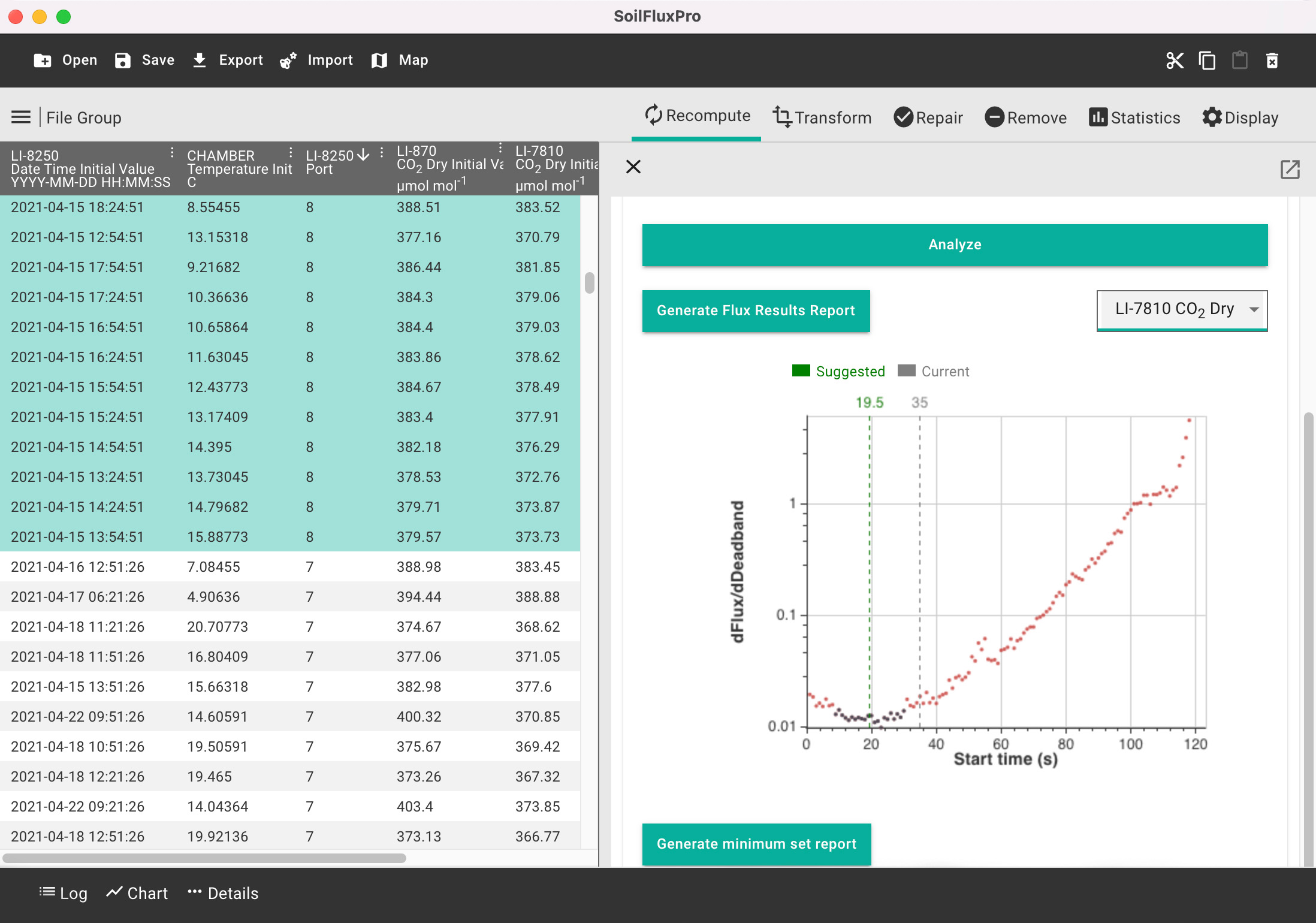SoilFluxPro™ Powerful and easy-to-use data management and optimization software
SoilFluxPro streamlines the management of large datasets and includes post-processing tools to refine your soil gas flux results. It is developed exclusively for and included with LI-COR soil gas flux systems.
Why choose SoilFluxPro Software?
Fine-tune soil gas flux results
Compute fluxes and perform quality assurance checks for both long-term and survey datasets. SoilFluxPro allows you to revise the parameters of large datasets and instantly see the effect on your flux calculations. Recalculate multiple datasets at a time and use what you learn to optimize your measurements.
Integrate complex datasets
The Smart Chamber and LI-8250 Multiplexer both integrate analyzers of various gas species, including third-party analyzers. SoilFluxPro carries that integration through post-processing. Compute fluxes of trace gases and isotopologues using complex datasets imported from LI-COR and third-party analyzers.
Map soil gas fluxes
Each measurement is tagged with GPS location data. SoilFluxPro uses that data to create a .kml file with concentrations and fluxes. You can then export that .kml file to a mapping service to generate visualizations.
New in SoilFluxPro Version 5.3
SoilFluxPro v5.3 includes powerful new advanced guidance tools for deadband and stop time analysis, the ability to save your favorite displays and link them to output when exporting data, and more.
Improved, automated guidance for deadband and stop time
In SoilFluxPro v5.3, guidance can be applied to multiple observations, rather than just one as in previous versions. SoilFluxPro determines the deadband and stop time using data from multiple options with a method based on diffusion theory.
For Deadband Analysis, SoilFluxPro calculates the point at which the flux is least sensitive to the start time and suggests the average value for that period as the deadband.
For Stop Time Analysis, SoilFluxPro calculates the point at which to stop the measurement to ensure that computations do not include the effects of lateral diffusion.
This function works best on high concentration gases such as CO2. The more observations included in the analysis, the better the result.

Save display favorites and more
With SoilFluxPro v5.3, you can save display settings—which parameters to show in columns—as favorites. The addition of this feature also allows you to export a set of parameters based on the display.
The Repair tool has been improved to allow you to filter erroneous values and replace them with those interpolated from adjacent values. You can configure the filtering with minimum and maximum thresholds.
New filter tools in Recompute give you the ability to manually delete an outlier on a plot, and recompute the charted data. The tools include rectangle and polygon selection, undo, and restore points.
In SoilFluxPro v5.3, you can pop out and expand windows for a better view of flux plots and computations.
For detailed information on these new features and how to use them, read What's New in SoilFluxPro v5.3 on the support site.